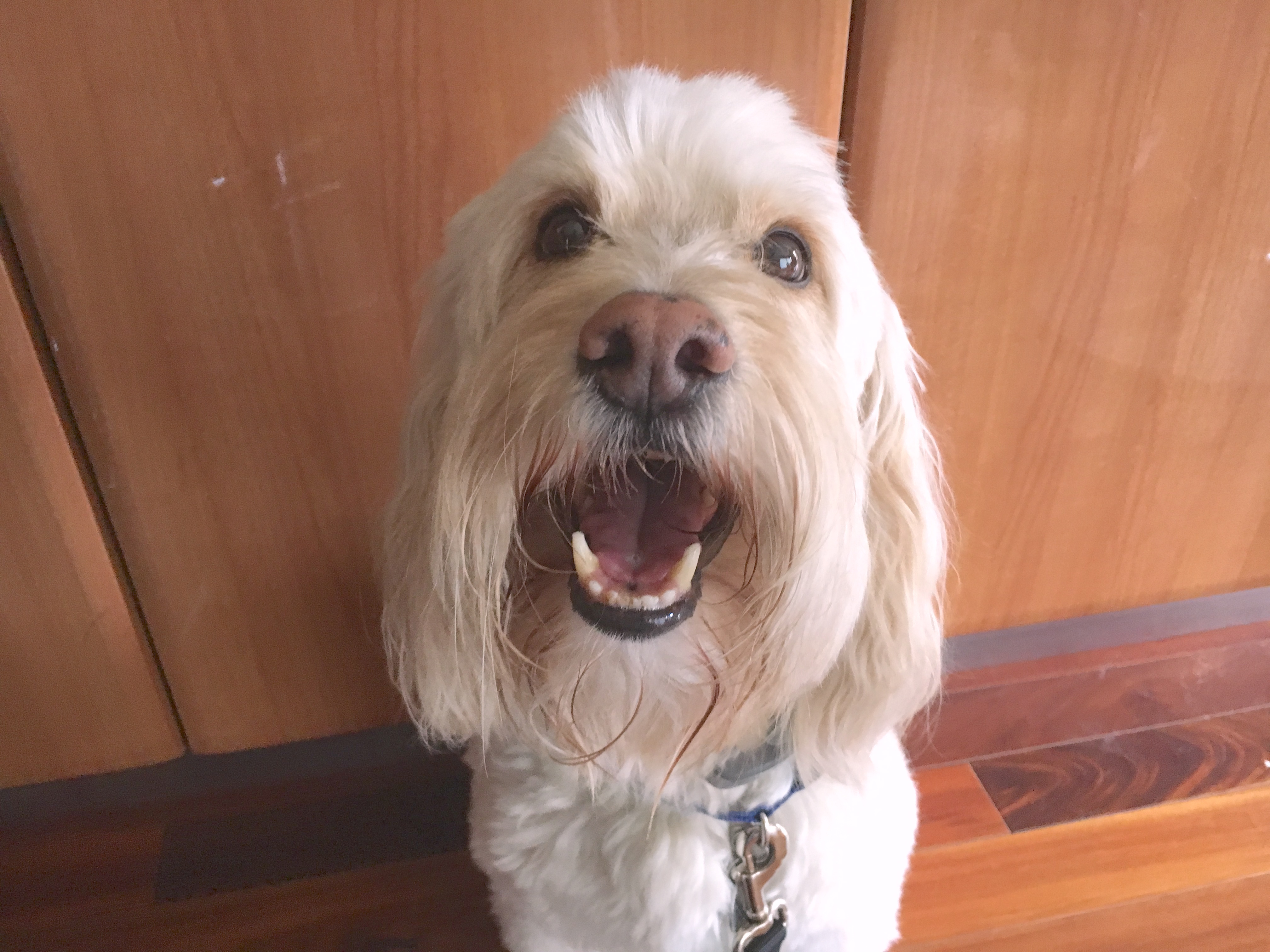Tips to Stop a Dog From Demand and Nuisance Barking
By: David Codr
Published Date: March 16, 2017
Loopi is a nine-year-old Mini Golden Doodle who lives in Omaha. His guardians set up a dog obedience training session with me after getting a ticket for a barking dog.
As advertised, Loopi did quite a bit of barking once I knocked on the door. In fact I had difficulty hearing or talking to his guardians when I arrived.
I always try to give a dog the opportunity to stop barking on their own. Many dogs are simply raising an alert and stop once they think everyone has been notified. But that was not the case for Loopi. I ended up pulling out a leash and then stepping on it about two feet from where it attached to his collar. This is a great way to stop dog barking.
When I sat down with his guardian to discuss Loopi’s dog behavior problems, I learned that he didn’t have many rules or boundaries. This common error is shared by many dog guardians I am hired by.
If we don’t have may rules, its easy for a dog to think it is on equal footing with the humans. If the dog see’s you as an equal, then listening to you becomes optional. Additionally, many dogs will try to take on a leadership position when they feel like they are in a position of authority.
As we chatted, Loopi came over and got in his guardian’s personal space. As soon as he did, she started to pet him. Once she stopped, he started barking at her. This is known as demand barking and is the dog equivalent of a dog having a bit of a temper tantrum for not getting its way.
I made a number of suggestions such as adding rules, boundaries and new ways to communicate with Loopi. Adding structure and limits is a great way to help a dog start to identify as a follower. My philosophy is to have the dog see its guardians like a child sees its parents; loved and an important part of the group, just with less authority then the guardians.
Loop’s primary guardian does an outstanding job of playing and interacting with him. Probably mores than any client I have ever worked with. Adding a little structure to these interactions (like asking him to sit before throwing the ball, etc) will go a long ways toward helping him develop more control and redefining the leader follower dynamic.
One job dogs often take on when they think they are in a leadership position is security. This is usually manifested by a lot of barking at the door when guests knock or come inside. As you saw in the first video, that was certainly the case with Loopi.
I spent a few minutes explaining how the guardian can take over door security from Loopi, then demonstrated it to his guardian in the video below.
Effectively communicating to Loopi that his door guarding and alerts were no longer needed will be an important step in the process of stopping his nuisance barking.
Another major contributor to Loopi’s barking stems from his belief that he is an authority figure. In order to stop the barking, its going to be important for his guardians to constantly enforce rules and boundaries and apply structure.
He will likely test the resolve of his guardians over the next few weeks, but if they are consistent in their leadership role, his days of over barking should quickly be a thing of the past.
ROADMAP to SUCCESS
- Consistently enforce rules and boundaries to help Loopi start to identify as a follower.
- Increase his daily exercise on days when company will be over.
- Strongly consider neutering Loopi to help reduce his intensity and frustration of not being able to “use what he’s got.” This should help reduce the barking.
- Stop petting Loopi when he nudges or paws for attention.
- Immediately stop petting Loopi when he whimpers, jumps up or shows other signs of excitement.
- Use passive training to reward Loopi for desired actions and behaviors.
- When returning home, ignore Loopi unless he is completely calm. If he starts to get excited when reaching out to pet him, retract and continue on without petting or correcting.
- Start petting Loopi with a purpose.
- Train Loopi to use the dog bad as demonstrated in the session.
- Practice the Focus exercise with 10-15 treats two or more times a day for the next 3 weeks. Gradually add time to the second movement until he can Focus for 20 seconds.
- Once he has the Focus learned, use this to distract and redirect him if he gets excited or starts barking in the car.
- Use the Martingale collar and special twist of the leash to stop him from pulling on walks.
- Get into a habit of walking out doors, up / down stairs or into rooms first.
- Practice the door answering exercise at least two times a day for the next 7-12 days while gradually removing the chairs and pushing the inside doors wider apart.
Categorized in: Dog Behavior




